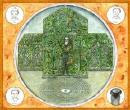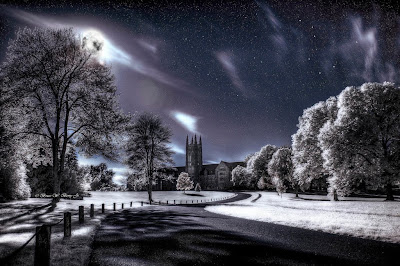
Where you can find the best book at the right reading level and spark (or fuel) a life long love of reading in your kids!
12.21.2009
Happy Winter Solstice!

12.19.2009
Book Lists: From the National Ambassador for Young People's Literature
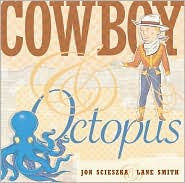




Here is the text of Jon's article for the LA Times feature Children's Books of 2009 that ran on 12/13/09. I have to take a minute to brag an point out that some of the books I enthusiastically reviewed in the 15 months since I started wellness-geniar.com made Jon's list!
No way you could make a list of great kid's literature from the last two years and NOT mention Brian Selznick's Caldecott winner, The Invention of Hugo Cabret and Neil Gaiman's Newbery winner, The Graveyard Book. I was also pleased to see his nods to Mo Willem's duo, Elephant & Piggie as well as Eoin Colfer's spectacular series Artemis Fowl. I was thrilled to see Scieszka's shout out to graphic novels, especially Françoise Mouly's new series for beginning readers, TOON Books, featuring Eleanor Davis's award winning Stinky, and Shaun Tan's masterful work of art, The Arrival. Scieszka also mentions author of picture and chapter books who is new to the scene, Mac Barnett. Mac's two picture books and chapter book were all illustrated by a favorite artist/author of mine, Adam Rex, author of The True Meaning of Smekday. Barnett's books, as well as a few other things he has up his sleeve, will be featured in a review on January 4, 2010 that is not to be missed. I'll put a sock in it for now, but I do want to add that Scieszka mentions some great teen books that my family and I have had the pleasure of reading over the last two years as well!
Children's books 2009: It's all good! says Jon Scieszka
A report from the National Ambassador of Young People's Literature.
By Jon Scieszka
December 13, 2009
As our first national ambassador of young people's literature, I am pleased to report that the world of children's books is rocking.
My job for the last two years has been to raise national awareness of the importance of kids' books and to promote the full variety of great children's literature. My fellow authors and illustrators have made that job as easy as falling off a log while wearing a fancy sash. By my official ambassadorial estimate (and yes, I do also have tassels on my sash and those little triangle-shaped flags on my car), Jeff Kinney's "Diary of a Wimpy Kid" series and Stephenie Meyer's "Twilight" books got 49,323,701 kids reading.
And enjoying it.
My platform has been to reach reluctant readers. And one of the best ways I found to motivate them is to connect them with reading that interests them, to expand the definition of reading to include humor, science fiction/fantasy, nonfiction, graphic novels, wordless books, audio books and comic books. Librarians and teachers have embraced all of these new kinds of reading.
"The Invention of Hugo Cabret" by Brian Selznick, a fantastic 544-page genre-bending combination of text and art, won the Caldecott medal for most distinguished American picture book in 2008. Neil Gaiman's amazing fantasy-horror-thriller, "The Graveyard Book" (with illustrations by Dave McKean), scooped the Newbery medal for the most distinguished contribution to American literature for children in 2009. A generation ago, an illustrated book or a fantasy thriller would not have been considered "real reading."
I am thrilled to report that humor is also finally getting its long overdue credit. "Skippyjon Jones Lost in Spice" by Judy Schachner and "Duck! Rabbit!" by Amy Krouse Rosenthal and Tom Lichtenheld -- two great new picture books for beginning readers -- are funny. Mo Willems' new early readers, the Elephant & Piggie books, are seriously funny. Eoin Colfer's middle-grade "Artemis Fowl" series is fantastically and flatulently funny. And the humorous state of the children's book world has been massively improved by Dave Barry and Ridley Pearson's smelly cheese/weinermobile thriller, "Science Fair."
Nonfiction used to get no respect. Now adults have realized that some kids are not big fiction fans. They want information. "Horse Song: The Naadam of Mongolia" by Ted and Betsy Lewin and the "Frogs" and "Spiders" photo books of Nic Bishop show new worlds. History comes artistically to life in Jim Murphy's "A Savage Thunder: Antietam and the Bloody Road to Freedom," Kadir Nelson's "We Are the Ship" about the Negro baseball leagues and Walter Dean Myer's historical fiction "Sunrise Over Fallujah."
And I'm not sure what to call " Lego Star Wars: The Visual Dictionary." Nonfiction? Movie/toy fiction? But it is any Lego/Star Wars' kid's dream. Call it spectacular.
"Just looking at pictures" used to be considered cheating. No longer. The graphic novel is booming. Comics, heavily illustrated texts, books with no words are now accepted as reading. The ambassador approves. Graphic storytelling is a great way to help kids get started reading. It's also a powerful artistic form in its own right.
Françoise Mouly and Art Spiegelman have started publishing high-quality comics for kids at Toon Books. "Jack and the Box" by Spiegelman, "Little Mouse Gets Ready" by Jeff Smith (see also: his amazing "Bone" series) and "Stinky" by Eleanor Davis are inspiring kids to become savvy visual readers.
First Second Books has also pushed kids' literature into wonderful new graphic territory with everything from funny early readers like "Sardine in Outer Space," written by Emmanuel Guibert and illustrated by Joann Sfar, to the graphic novel/photo journal of war-torn Afghanistan, "The Photographer" (photographs by Didier Lefèvre, written and drawn by Guibert).
Shaun Tan's wordless book "The Arrival" will take you places you've never been. David Small's graphic memoir "Stitches" is one of the best books I read all year.
Audio books have also gained acceptance as a type of reading, thanks to great recordings like "Martina, the Beautiful Cockroach," written and narrated by Carmen Agra Deedy, "Elijah of Buxton" by Christopher Paul Curtis (and narrated by Mirron Willis), and "The Absolutely True Diary of a Part-Time Indian" written and narrated by Sherman Alexie.
The former stepchild genre of sci-fi/fantasy gave us novels as compelling as any classics: Suzanne Collins' dystopian thriller "Catching Fire" (the second in the "The Hunger Games" trilogy), Scott Westerfeld's steampunk adventure "Leviathan" (with illustrations by Keith Thompson) and Alexander Gordon Smith's ferocious nightmare suspense "Lockdown: Escape From Furnace."
New voices? Plenty. Look at everything by Mac Barnett: "Billy Twitters and His Blue Whale Problem," "Guess Again!" and "The Case of the Case of Mistaken Identity." Ditto for author-illustrator Adam Rex, who illustrated each of these books.
During my ambassadorial tenure, we did alphabet books like nobody does alphabet books. The wonderfully abstract "A Is for Art" by Stephen T. Johnson and "Just in Case a Trickster Tale and Spanish Alphabet Book" by Yuyi Morales represent some of the most inventive.
We welcomed great books from writers who didn't start in the children's field. Thank you to sportswriter Mike Lupica for "Million-Dollar Throw," Terry Pratchett (smartest/funniest fantasy writer in the universe) for "Nation" and Paul Feig (brilliant creator of television's "Freaks and Geeks") for "Ignatius MacFarland: Frequenaut!"
And last, but certainly not least, the old standard fiction gave us some killer storytelling: "After Tupac & D Foster" by Jacqueline Woodson, "Going Bovine" by Libba Bray, "Book of a Thousand Days" by Shannon Hale and "The Magician's Elephant" by Kate DiCamillo with illustrations by Yoko Tanaka.
The state of children's books? Thriving. Inspiring.
Get out there and see for yourself.
Scieszka is the author of numerous books, including "The True Story of the Three Little Pigs!" His successor as the national ambassador of young people's literature will be announced by the librarian of Congress in January.
Copyright © 2009, The Los Angeles Times
12.18.2009
Oscar and the... written and illustrated by Geoff Waring, 32 pp, RL 1
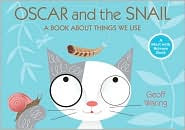


 In Oscar and the Bat: A Book about Sound, Bat proves to be the perfect friend to enlighten Oscar as to the nature of sound, from a bird's song to thunder.
In Oscar and the Bat: A Book about Sound, Bat proves to be the perfect friend to enlighten Oscar as to the nature of sound, from a bird's song to thunder.

12.17.2009
The Frog Scientist, Gorilla Doctors, A Life in the Wild, Life on Earth - and Beyond by Pamela Turner, RL 4
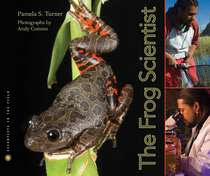





12.16.2009
Eleanor Davis Interview
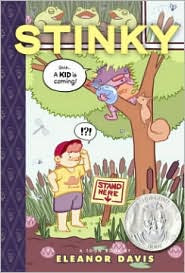




(My questions are in yellow)
How did you decided to go to art school and did you choose Savannah College of Art and Design specifically because of the Sequential Art program they have?
Did you have a foundation year at SCAD where everyone took the same basic classes, regardless of major? If so, what was your favorite? What was the most challenging?
What were the names of some of the classes you took in the Sequential Art program?
We live in a pretty work oriented society, one that does not always see the value of an education for the worth of the education itself but as a stepping stone to a job. Did you ever wonder/worry about what kind of career you would have after graduation?
I don't know a thing about the world of zines and mini-comics, except that they are usually hand made, not produced by a publishing house. How do you share what you make with others? Do you have a Mini-Comicon? Have you ever had a booth at Comicon? I'm guessing that the internet makes the world of mini-comics and zines a lot smaller?
Do you ever create artwork to that is shown in galleries?
How did you connect with Françoise Mouly at TOON Books? I have read a few interviews with her, is she as cool as she seems?
Had you written Stinky before connecting with TOON Books?
Did you draw, ink and color Stinky?
I was admiring your original art for sale at Little House Comics, the website you and your husband, Drew Weing who is also an artist, share. I noticed that there were no word bubbles in the art. What comes first for you, the picture or the words?
Francoise Mouly and Jonathan Bennett are credited for Book Design on Stinky. What does this mean?
For people like me who aren't familiar with the world of comics, what does "inking" mean?
Your husband inked The Secret Science Alliance and the Copy Cat Crook. How/why did you decide to have him do the inking and have
I know that computers are used for creating illustrations these days, did you use a computer for either of your books?
You mentioned in an interview that you do a lot of work with your husband, brainstorming and sketching together. I have always wondered how two artist collaborate on a piece? Steve Johnson and Lou Fancher are a team who have illustrated many children's picture books. When I read one of their books, I always scrutinize the artwork to see if I can tell who did what. Can you describe the process of working together for you and Drew?
From reading interviews, I know that your parents were into comics, so you grew up with comic books in your house and expanded your interest from there. I grew up in a house with no comic books, in fact, I never even read the comics in the newspaper. I think reading Gary Larson's Far Side one panel comics has been the extent of my appreciation up until the last year. I have to admit, as someone who has a passion for reading novels, I feel like I'm cheating somehow when I read a book that has more pictures than words. I also feel like I am cheating (or being cheated?) when I read a book in one sitting, as I do with the kid's graphic novels I've been picking up lately. What's wrong with me? How can I shift my attitude so that I can really appreciate the graphic novels I have been reading and enjoying?
I read that some of your childhood favorites were Eloise, by the amazing team of Kay Thompson and Hilary Knight, and Janet and Alan Ahlberg, creators of the incredible Jolly Postman Books, among others. I LOVED Eloise as a kid - I still have my mom's falling apart copy. I remember doing a 3-D book report on the book when I was in 5th grade (even though it's a picture book) and making a diorama of her very messy bedroom and a little Eloise doll out of pantyhose. I have a print Hilary Knight did in celebration of Eloise's 40th birthday with 40 different images of her. Hilary Knight's style is very illustrative, almost comic like. Do you think this is part of what drew you to the book as a child? I think that Janet Ahlberg's style of illustration is a bit comic like as well, with the inked outlines of her characters and scenery.
Now, on to The Secret Science Alliance and the Copy Cat Crook! I have to say, one of the things that drew me to Stinky right off the bat was the map of the swamp at the front of the book. I am a huge fan of maps and will buy almost any book with a map in it, even if it is a map of a kitchen. In a way, many of your illustrations in The Secret Science Alliance and the Copy Cat Crook are maps or map like. What role did maps play when you were illustrating The Secret Science Alliance and the Copy Cat Crook?
As I said in my review of The Secret Science Alliance and the Copy Cat Crook, I felt like I had read a 200 page young adult novel when I turned the last page of your book. Aside from a really great plot, I think a large part of this comes from the extremely well developed characters of Julian, Greta and Ben. What went into thinking up these three? How did you decide to give Ben the big eyebrows? How did you decide to make Greta African American? And motherless? How did you decide to make Julian the main character and new kid at school rather than Greta or Ben?
I read in an interview that you were and are still a bit of an inventor - a Kleenex box with a secret compartment for snacks, a desk-bookcase-bunk bed and a tiny house with wings, to name a few. When you were creating the inventions that Julian, Ben and Greta come up with, how closely did you feel you had to stick to reality?
When you were conceiving The Secret Science Alliance and the Copy Cat Crook, how did you figure out how many panels to have on a page, or per scene?
I have to say, in addition to your great story telling in The Secret Science Alliance and the Copy Cat Crook, I am sure that part of the reason I felt like I had read a traditional novel by the time I finished was because of the sheer volume of images, information and detail included on every page! How on earth did you manage to pack in so much detail and keep the illustrations looking so crisp and easy to follow?
Is The Secret Science Alliance and the Copy Cat Crook going to be a series?
I know that you are collaborating on a book with your mother, Ann Davis. Can you tell us a little bit about it?
Thank you so much for opening up a new world of reading to me with The Secret Science Alliance and the Copy Cat Crook and Stinky!!! I am really enjoying the graphic novels I have been reading - Amulet by Kazo Kibuishi is one of my favorites so far. I also really like The Fog Mound Trilogy by Susan Schade and Jon Buller. Where should I read next in my auto-didactic exploration of the world of graphic novels?
12.14.2009
The Tree of Life written and illustrated by Peter Sís



Charles Darwin and the Beagle Adventure, written by AJ Wood and Clint Twist with Extracts from the Works of Charles Darwin, RL 4

